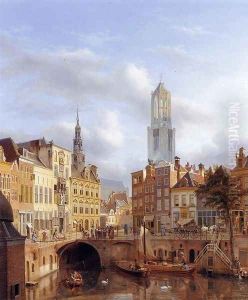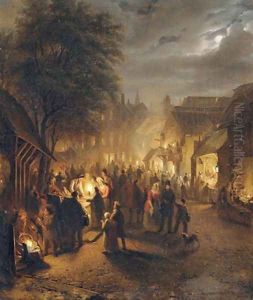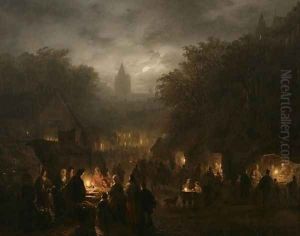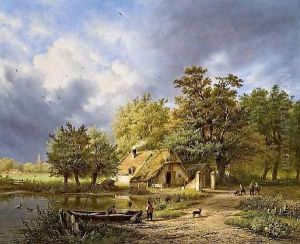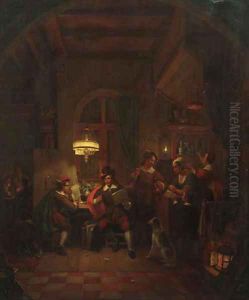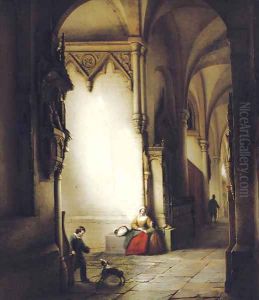Georg-Gillis Haanen Paintings
Georg-Gillis Haanen, also known as George Gillis van Haanen, was a Dutch painter born on 5 June 1807 in Utrecht, the Netherlands. He was part of a family of artists; his father, Casparis Haanen, was a genre painter, and his siblings Remigius, Elisabeth, and Adriana were also painters. Haanen's work was influenced by the Dutch Golden Age, and he became known for his detailed genre paintings, landscapes, and cityscapes.
He initially received his artistic training from his father and later continued his education at the Royal Academy of Fine Arts in Antwerp, Belgium. Throughout his career, Haanen lived and worked in various European cities, including Amsterdam, Rotterdam, and Vienna. His time in Vienna was particularly significant as he became associated with the Biedermeier movement, which emphasized simplicity and modesty in reaction to the excesses of the preceding Empire style.
Haanen's paintings often depicted the daily life of the middle and lower classes, with a focus on the interiors of homes and public spaces such as markets and streets. His attention to detail and ability to capture the ambiance of the scenes he portrayed made him a popular artist during his lifetime. He exhibited his work in various salons and exhibitions, and his paintings were collected by art lovers across Europe.
Despite his success, Haanen's later years were marked by financial difficulties, and he eventually returned to the Netherlands. He continued to paint until his death on 3 February 1879 in Amsterdam. His works can be found in museums and private collections, and he is remembered for his contributions to Dutch 19th-century painting, particularly his role in the Biedermeier movement and his influence on the genre painting of the period.
